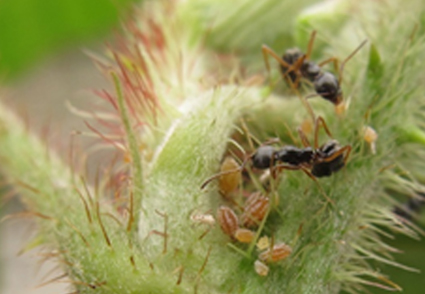Abstract
A new species of the genus Aphis feeding on Rubus ellipticus in China, Aphis rogeri Qiao sp. nov. is described. The new species is distinguished by the presence in life of successive pleuro-marginal wax spots, rostrum reaching over meta-coxae and short siphunculi. The new species is supported by molecular data and morphological features. An updated key to Aphis species feeding on Rubus is provided.
References
Blackman, R.L. & Eastop, V.F. (2006) Aphids on the World’s Herbaceous Plants and Shrubs. John Wiley & Sons, Ltd., Chichester, 1439 pp.
Blackman, R.L. & Eastop, V.F. (2021) Aphids on the World's Plants: An online identifyc-ation and information guide. Available from: http://www.aphidsonworldsplants.info/ (accessed 28 July 2021)
Foottit, R.G., Maw, H.E.L., von Dohlen, C.D. & Hebert, P.D.N. (2008) Species identification of aphids (Insecta: Hemiptera: Aphididae) through DNA barcodes. Molecular Ecology Resources, 8 (6), 1189–1201. https://doi.org/10.1111/j.1755-0998.2008.02297.x
Kimura, M. (1980) A simple method for estimating evolutionary rate of base substitutions through comparative studies of nucleotide sequences. Journal of Molecular Evolution, 16 (2), 111–120. [https://link.springer.com/article/10.1007/BF01731581] https://doi.org/10.1007/BF01731581
Kumar, S., Stecher, G. & Tamura, K. (2016) MEGA7: Molecular Evolutionary Genetics Analysis version 7.0 for bigger datasets. Molecular Biology and Evolution, 33 (7), 1870–1874. https://doi.org/10.1093/molbev/msw054
Thompson, J.D., Higgins, D.G. & Gibson, T.J. (1994) CLUSTAL W: improving the sensitivity of progressive multiple sequence alignment through sequence weighting, position-specific gap penalties and weight matrix choice. Nucleic Acids Research, 22 (22), 4673–4680. https://doi.org/10.1093/nar/22.22.4673

